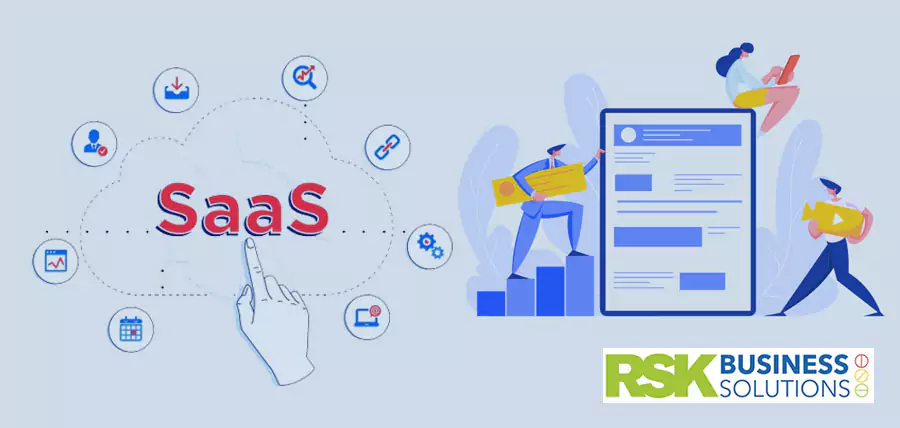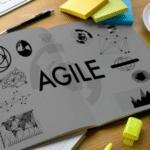
Related Articles

IT Outsourcing
RSK BSL Tech Team
May 4, 2025
|
|

Mobile Application Development
RSK BSL Tech Team
April 30, 2025
|
|

Software Development
RSK BSL Tech Team
April 27, 2025
|
|

Hire resources
RSK BSL Tech Team
April 24, 2025
|
|

Software Development
Praveen Joshi
April 20, 2025
|
|

Artificial Intelligence
Praveen Joshi
April 17, 2025
|
|

Pen Testing
Praveen Joshi
April 15, 2025
|
|

AI Tech Solutions
RSK BSL Tech Team
April 14, 2025
|
|

Software Development
RSK BSL Tech Team
April 9, 2025
|
|

Pen Testing
RSK BSL Tech Team
April 7, 2025
|
|

Software Development
RSK BSL Tech Team
April 3, 2025
|
|

Cloud Application
RSK BSL Tech Team
March 31, 2025
|
|

Pen Testing
Praveen Joshi
March 27, 2025
|
|

Software Development
RSK BSL Tech Team
March 25, 2025
|
|

Software Development
RSK BSL Tech Team
March 20, 2025
|
|

Software Development
RSK BSL Tech Team
March 18, 2025
|
Why is Saas your future enterprise software distribution model?
SaaS arrived at the scene a few years ago and started clawing its way up the chain. By the end of 2018, SaaS represented 28% of the enterprise software market. The number is expected to go up to 45% by 2023.
Revenue growth has kept pace, according to a report by Synergy Research. Towards the second quarter of 2019, enterprise SaaS revenue hit $100 billion. The trend is expected to continue.
As it stands, SaaS is both the present and future of software distribution.
SaaS increases productivity and makes it possible for team members to access services on the cloud. It is useful for teams employing software development outsourcing services. This way, team members who are separated geographically can work productively on the same project. Access to the cloud also lowers maintenance and management costs.
Let’s take a detailed look at the things that make SaaS the bigshot of enterprise software distribution.
Easy Upgrades And Updates
Pushing an update on the SaaS model is easy and convenient for the developer and the customer. Developers or providers can update or upgrade the application, allowing it to reach seamlessly to the user. This also bodes well for any agile development company because the updates and upgrades can be iterative.
For the customer or user, this reduces the expense of having to allocate budgets or manpower to upgrade existing systems. Enterprise users can be notoriously slow to adopt regular updates and upgrades. However, the SaaS distribution doing the update makes adoption easier.
Of course, not all enterprise users welcome updates. Sometimes, there is a fear of upgrades breaking the existing system or the requirement of training. A fix in these cases is usually achieved by the SaaS provider keeping a clear update calendar. The IT department at the enterprise user may also have access to decide when and how the update is employed.
SaaS services available to an enterprise are endless. Options can range from accounting, HR management, inventory management, to calendars and word processors.
These applications may be entirely on the cloud and hosted by the SaaS provider. Alternatively, the applications can be installed on employee computers with the SaaS provider handling operation and updates. Microsoft Office 365 Enterprise is an excellent example of the latter category.
Scalable Pricing And Sustained Income
SaaS platforms can be more discerning and flexible in their pricing models. This allows the service to be accessible to a wider number of users. The same product or its variations can be available to enterprises of various sizes.
For example, the software can have options for micro, small, medium, and large enterprises. Each business can choose from features and pricing options that fit their requirements and budget expectations. This is demonstrably better than a one-size-fits-all approach.
Additionally, an agile development company may better use its model to create better versions and controls for the software to be more suitable for user application requirements.
Budgets and pricing play a big role in decision-making. A SaaS model can considerably lower the threshold of entry. There is no need to purchase the software at full cost, so onboarding can be relatively cheap. Customers/enterprises don’t have to deal with problems related to provisioning, licensing, and upfront expenses.
For a SaaS provider, the lower onboarding cost means their product is accessible to the budget of a larger userbase. Most SaaS providers work with a model that is akin to a monthly or yearly subscription. This allows a higher Monthly Recurring Revenue (MRR) and Customer Lifetime Value (CLV). It may also lower Customer Acquisition Costs.
A steady stream of revenue is an extremely desirable option for any business. Additionally, with SaaS, the revenue can be largely predictable and reasonably protected from changes in market conditions. It’s not just the software; even the business model can be fairly scalable!
Better Customer Retention
An important factor for SaaS is that it is not a one-and-done deal. The customer is more likely to stay with your business for a longer time. Plus, considering the enterprise customer, a strong business relationship can be cultivated. Most SaaS providers see increased customer retention.
Business relationships aside, the very nature of SaaS is conducive to customer retention. Since the software is managed and upgraded by the SaaS provider, it can be ensured that the customer always has access to easy-to-use software.
The product can be updated to match evolving business requirements and stay on top of new developments. With a focus on user experience, the bespoke software development can be more than a tool and even become a resource.
Opportunity For Future Growth
The use of the cloud makes flexible development and collaboration easier than ever before. This is true for the SaaS provider as well as the enterprise user. Deploying SaaS makes collaboration easier. Teams and members can be connected from anywhere in the world to facilitate collaboration. Most SaaS software lives in the cloud, and collaboration across the globe becomes easier.
Software has been shaping the modern business environment and life. As companies and businesses use more of “smart” technology, software takes a center-stage even for enterprises where software isn’t the core offering.
Several enterprises, even if they are not software companies, often choose to develop their own SaaS platforms. It is very common for businesses to employ software development services outsourcing as a way to manage or develop their SaaS platform.
Microsoft is the current market leader on the SaaS platform. A few years ago, Microsoft CEO Satya Nadella famously predicted that every business will have to be a software business. Those words are ringing increasingly true. Choosing SaaS as your future enterprise software distribution model is the way forward.
Praveen Joshi
Praveen is a seasoned IT Solutions Leader and Director at RSK Business Solutions, a technology-driven IT Consulting Company that specializes in Bespoke Software Development, Agile Consulting, Mobile App Development, Smart Sourcing, and much more. For the last 17 years, he has been delivering quality custom IT solutions that help businesses achieve their goals.

 Share
Share Post
Post Tweet
Tweet Copy
Copy


